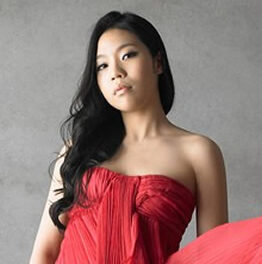Technique and virtuosity on a musical instrument is a lifelong pursuit for most of us and – in major artists – an object of envy for musicians chasing this seemingly elusive goal. Technique, for its own sake, becomes boring, pointless and eventually numbing. The great music that all of us spend our hard-earned money to hear performed has an emotional content that technique by itself will not convey. Musicians spend thousands of hours practicing so that they will have the ability to transcend the purely physical difficulties of playing, in order to reveal the inner life of the composition they are performing. Breaking down this barrier, while certainly important, is merely the means to attain a higher goal. The double-edged sword of virtuosity is that when a certain level is attained you can coast on that one attribute to the exclusion of anything else. Add to that the fatigue and grind of a busy concert schedule, along with the playing of works that you have performed hundreds of times, and the situation is ripe for a flat, uninspiring presentation. Regrettably, that is my overall assessment of the February 7 performance by the Kalichstein-Laredo-Robinson Trio (KLR) in Duke University’s Reynolds Theater.
The Chamber Arts Society had originally booked this concert into the much larger and acoustically inferior Page Auditorium, so when the switch took place, the concert was even more sold out than usual. There was great anticipation for this well-known piano trio. The fact that the program was a very conventional, non-threatening one (i.e. no “modern” music) may have contributed to the SRO crowd. KLR has played all over the world and have numerous honors, awards and recordings to their credits. The trio consists of three internationally-acclaimed soloists in their own right: Joseph Kalichstein, piano, Jaime Laredo, violin, and Sharon Robinson, cello. I couldn’t help but notice the glaring disparity between the length of the biographical notes of Laredo (nearly two full pages) and the two brief paragraphs for his wife, Robinson, who preceded Fred Raimi as cellist of the Ciompi Quartet.
Kalichstein gave some opening remarks regarding the first work on the program – Beethoven’s so-called “Kakadu” Variations. He explained that this is one of those works that the composer revisited years after it was written, making additions or adjustments. Here, Beethoven added a somber adagio introduction leading into what is aptly described as a “silly little tune.” Although the theme comes from a then-popular but now forgotten opera, it sounds quite similar to “Papageno’s Aria” from Mozart’s opera The Magic Flute . Beethoven worked miracles with “silly little tunes,” as in his famous Diabelli Variations for piano, but this work doesn’t rise to that level. The fact that it was played in an etude-like manner, absolutely correct and devoid of any commitment, did little to improve the work.
Ravel’s lone Piano Trio is one of his great masterpieces, owing much of its charm and unique flavor to what was in 1914 a new sound from America – jazz. There are many similarities between compositional styles of the impressionist school and jazz harmonies, and this trio is infused with both. I found this to be the highlight of this evening’s concert. Surface playing cannot even be attempted in a work such as this and the players seemed to dig a little deeper to get at the subtleties of Ravel’s language. This was quite encouraging, but short-lived.
Mendelssohn’s d minor Piano Trio is most likely among the top five most-performed works of its kind, and rightly so. It combines all the best of the composer’s very recognizable style including light and lightning quick scherzos, beautiful themes, and great writing for each instrument. This is where I felt let down the most, and there was also an increase in intonation problems. Robinson’s tone was at times grainy and unfocused, and little was done to blend with the phrasing of the other players. The artists almost never looked at each other while playing. I tried to not let that visual separateness sway what I was hearing, and I closed my eyes for long stretches, but still heard exactly what I had seen. I can’t help but compare this performance with one given by the Beaux Arts Trio in Chapel Hill last year. Despite having played this probably two to three times more than KLR, their performance was filled with a freshness, spontaneity and joy that was completely lacking here. Of course it is very difficult to maintain that emotional level over many years and on a long tour, but on the other hand, that is the musicians’ job. First impressions last a long time and this was mine. To paraphrase a sports cliché, they did not leave it all out on the court/field.











